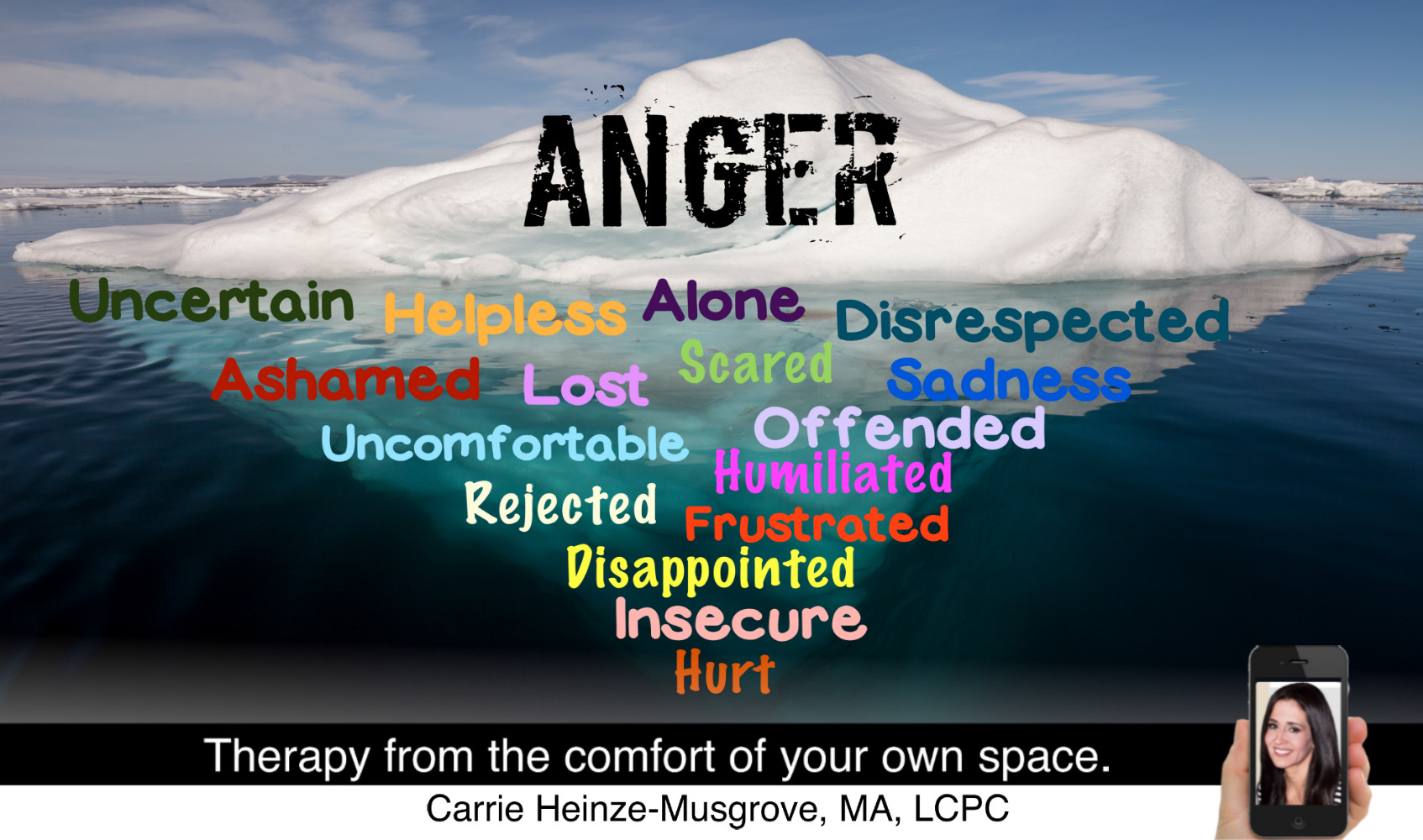Anger is often called a secondary emotion because we tend to resort to anger in order to protect ourselves from or hide other vulnerable feelings. What does this mean?
Anger is at the tip of the iceberg in that anger is one of the few feelings we make visible to others. But lurking just below the surface are other unpleasant feelings. These emotions exist “below the water line” where they are not immediately obvious to others.
We almost always feel something else first before we feel anger. Deciphering this takes some practice. But feeling afraid, attacked, offended, disrespected, forced, trapped, or pressured can be just below the surface. If any of these feelings are intense enough, we think of the emotion as anger.
Feeling uncomfortable can make you feel out of control and extremely vulnerable. Because of this, people tend to avoid these feelings in any way they can. One way to do this is by subconsciously shifting into anger mode. Anger can provide a surge of energy and make you feel more in charge, rather than feeling vulnerable or helpless. Essentially, anger can be a means of creating a sense of control and power in the face of vulnerability and uncertainty.
But if you look at what is driving the anger, you will often find unresolved pain or fear. Until you focus on these issues, you will never resolve the problem. Anger pushes people away and scares them. It makes people fight back or shut down. Relationships don’t have room to breathe when they are defined by anger.
Therapy teaches you how to identify stressors and learn the tools to help you handle tense situations and manage uncomfortable feelings in constructive, positive ways.
Carrie






